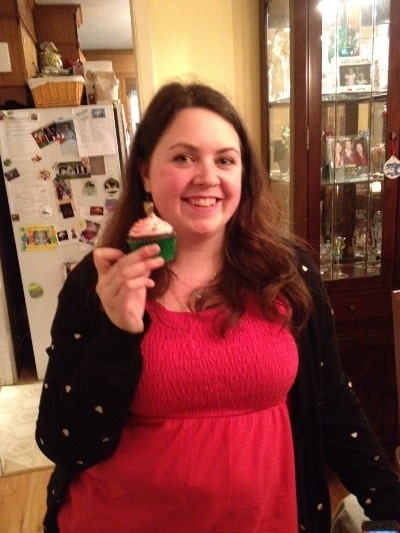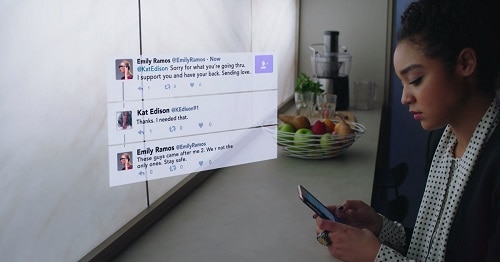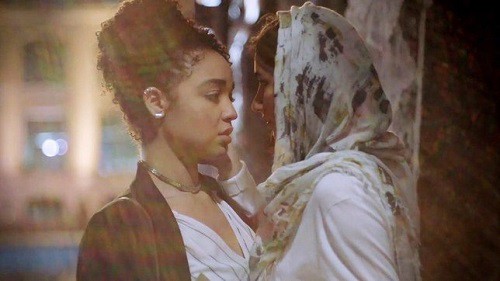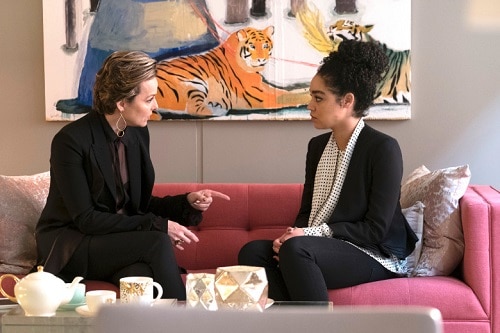The Bold Type, Freeform’s new show that focuses on the careers and lives of three friends working at fictional Scarlet magazine, feels like the most 2017 show on the air right now. The show isn’t afraid to tackle controversial issues, whether dealing with immigration, online bullying or free the nipple. A recent episode of the show even had a running joke about how irritating President Trump’s frequent trips to New York City can be for residents. The Bold Type isn’t afraid to take a stand, and that makes it a show we need right now.
While the premise of The Bold Type might sound familiar, the execution has taken the series into some fascinating places in the show’s short 10-episode first season. The show follows Jane (Katie Stevens), Sutton (Meghann Fahy), and Kat (Aisha Dee) as they navigate their lives as young women living in New York and working in the glittering (but also crumbling) world of a glossy women’s magazine.
Freeform has yet to pick up the show for a second season, and here are some reasons why we need a season 2:
The Bold Type Doesn’t Favor Romance Over Career
Scarlet magazine is clearly modeled on Cosmo, where executive producer Joanna Coles was the editor-in-chief for many years. This makes the show feel a lot more realistic than previous workplace television shows centered around women’s magazines. In a very 2017 twist, everyone is talking about page views and social shares and there’s already been an episode about layoffs. By season 2, there’s sure to be a whole subplot about Scarlet pivoting to video.
Sure, the world of Scarlet can be glamorous, but the show also never shies away from presenting publishing as a constantly changing industry. Jobs are tough to come by and career moves take up just as much real estate on the show as the characters’ complicated love lives. Jane worries about being taken seriously as a Scarlet writer interested in politics, Sutton wants to move into fashion and still pay her bills, and Kat discovers being a manager is tough.
This is exceedingly refreshing, especially as a show aimed at young women. Like Scarlet itself, the outer layer of the show’s glamour peels back to show the women at the heart struggling like many women early in their careers to establish themselves, find their voice, and get paid.
Our first introduction to Sutton is when we find out she’s dating an older member of Scarlet’s board of directors. While the show has fun with this very “OMG” forbidden romance, Sutton’s more interesting storylines have to do with balancing her monetary needs against her dreams of working in fashion. While women are still being underpaid for the same work as men, The Bold Type focused an entire episode on Sutton standing up for herself and negotiating her salary.
The show understands that there’s more drama in the workplace than just backstabbing and office romance. Through Sutton, the show has managed to tap into dramatic wells many other shows ignore, like how impossible it can be for those without an economic or social safety net to just “follow their dreams” when these entry-level dream jobs are low-paying. Sutton’s decision to go after the job in fashion comes with some real compromises, and her dedication to fight for a higher salary that reflects the value she brings to the position is an important message in a show with a young female audience.
The Bold Type is a Digital Native
While The Bold Type is not perfectly realistic (even at a fashion magazine, some of the outfits these girls wear to work seem insane) it does understand digital and social media better than many shows on television. This knowledge allows the show to plug into extremely timely topics without feeling like a Very Special Episode. While some TV shows are yelling at the kids on the lawn about avocado toast, The Bold Type is a digital native.
The writers on The Bold Type understand social media and don’t treat it like some kind of witchcraft with the ability to save or ruin civilization. This knowledge means that they can offer fresh takes on material like the very Gamergate-esque bullying of Kat on social media when she points out that a VR game is biased against women. While a great piece on Bustle pointed out how the show dropped the ball on being more inclusive of Kat’s identity as a woman of color, the bullying she experienced will feel all too familiar to any woman who has dared to have an opinion on the Internet.
Outspoken Kat also takes on the “free the nipple” debate when one of Scarlet’s instagram photos is flagged and taken down during Scarlet’s Breast Cancer Awareness campaign. It’s a powerful juxtaposition with the bullying episode when you realize that social media is often quick to take down images of the female form, but slow to respond to threats against people who use their platforms.
It’s also interesting to see the characters talk about the impact of Scarlet’s social media platforms as a valuable commodity, which is not usually how social media is portrayed on TV. Kat has to learn how to work around the rules and within the system in order to make her voice heard without losing the power of Scarlet’s million of valuable Instagram followers. Through Kat, The Bold Type shows that social media has a dark side, but that large social platforms can also be leveraged to amplify and tell important stories.
The Bold Type Embraces Positive LGBT Representation
Kat’s relationship with lesbian artist Adena (Nikohl Boosheri) also ties into timely issues around immigration and prejudices against Muslims that are unfortunately very timely. When Kat punches an Islamophobic jerk on the street Adena runs away when the cops show up, because she has to consider her immigration situation. Later Adena is flagged at the airport traveling to New York and sent back to her home country, allowing for Kat and Adena to have the world’s most romantic airport date.
The way the show deals with Adena and Kat’s budding relationship is also powerful and important representation for the LGBT community. To have a relationship between two women of color shouldn’t be rare on television, and yet it is. In fact, Adena might be American television’s first lesbian Muslim character. Through Adena, The Bold Type can talk about the intersection of race, gender, religion and sexuality.
The complicated “Kadena” relationship is one of the core romantic pairings on the show and is perhaps the show’s most well-developed and compelling love story. Through her relationship with Adena, Kat has been forced to confront her own shortcomings and embrace herself more fully. In a television landscape where LGBT characters are still rare (and often killed off), The Bold Type is boldly leading the charge for positive representation and compelling, multi-dimensional stories for queer women.
The Bold Type Isn’t Afraid to be Feminist
Perhaps the show’s defining characteristic is that it’s not afraid of the “F” word: feminist. Instead of depicting a The Devil Wears Prada situation where professional women backstab and catfight to the top, the women on The Bold Type are supportive of each other’s’ dreams. The female friendships on the show feel real in the way that they offer counsel and advice instead of fighting over men or professional goals. On The Bold Type there’s enough ambition to go around.
Perhaps the best example of this is Jacqueline Carlisle (Melora Hardin) who mentors her young charges in a way that is so supportive it verges on unrealistic. While many shows about the world of media go in the Cat Grant (Supergirl) and Wilhelmina Slater (Ugly Betty) direction of tough-as-nails bosses whose witticisms can border on cruelty, Jacqueline is the complete opposite. And while it does feel unrealistic that she would be so heavily involved with mentoring every single young writer on staff the way she does with Jane, it’s nice to see the catty boss trope flipped on its head.
The show isn’t afraid to embrace feminist issues, whether it’s the challenges of being spoken over and taken seriously or negotiating a fair paycheck. In a time when Teen Vogue has become a go-to political source, it feels timely to watch as Jacqueline and Jane fight to write about political topics for their female readership. The Bold Type posits that you can care about fashion trends and politics at the same time.
To bring these themes home, the finale of The Bold Type deals frankly with the topic of sexual assault and even includes the song “Quiet” by MILCK, which was originally performed at the Women’s March in Washington DC.
The Bold Type is television’s most 2017 show and succeeds not only with great storytelling, but also because it’s not afraid to take a stance on today’s hot-button issues. With well-rounded female characters telling stories that matter to modern viewers, it’s essential television.
So isn’t it about time Freeform renewed it for season two? There are way more relevant and powerful stories to tell with Jane, Sutton and Kat that we haven’t seen yet.
What’s been your favorite part of The Bold Type? What do you like best about the show? Sound off in the comments!
The Bold Type season 1 airs Tuesdays at 9/8c on Freeform. Want more news? Like our The Bold Type Facebook page.
(Image courtesy of Freeform)

Contributing Writer, BuddyTV




